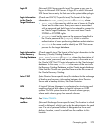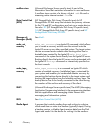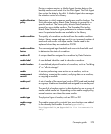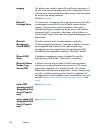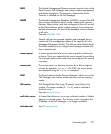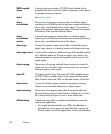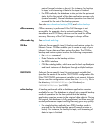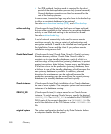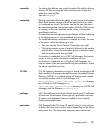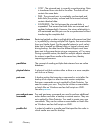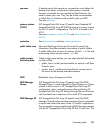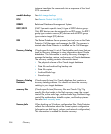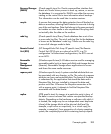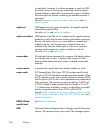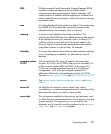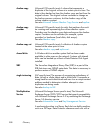overwrite An option that defines one mode to resolve file conflicts during
restore. All files are restored from a backup even if they are
older than existing files.
See also merging.
ownership Backup ownership affects the ability of users to see and restore
data. Each backup session and all the data backed up within
it is assigned an owner. The owner can be the user that starts
an interactive backup, the account under which the CRS process
is running, or the user specified as the owner in the backup
specification options.
If a user starts an existing backup specification without modifying
it, the backup session is not considered as interactive.
If a modified backup specification is started by a user, the user
is the owner unless the following is true:
• The user has the Switch Session Ownership user right.
• The backup session owner is explicitly defined in the backup
specification, where the username, group or domain name,
and the system name are specified.
If a backup is scheduled on a UNIX Cell Manager, the session
owner is root:sys unless the above conditions are true.
If a backup is scheduled on a Windows Cell Manager, the
session owner is the user specified during the installation, unless
the above conditions are true.
P1S file P1S file contains information on how to format and partition all
disks installed in the system during Enhanced Automated Disaster
Recovery (EADR). It is created during full backup and is saved
on backup medium and on Cell Manager into
Data_Protector_home\Config\Se ver\dr\p1s directory
on a Windows Cell Manager or in
/etc/opt/omni/server/dr/p1s directory on a UNIX Cell
Manager with the filename recovery.p1s.
package (MC/ServiceGuard and Veritas Cluster specific term) A collection
of resources (for example volume groups, application services,
IP names and addresses) that are needed to run a specific
cluster-aware application.
pair status (HP StorageWorks Disk Array XP specific term) A mirrored pair
of disks can have various status values depending on the action
performed on it. The three most important status values are:
Concepts guide 381



